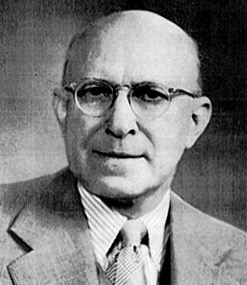
Mobile lumber magnate Ben May wanted Southern Research to do something special with his $25,000 gift in early 1946.
The non-profit research organization’s original charter spelled out a mission to support the growth of Southern industry, but May demanded that his donation focus on improving human welfare in the region.
May’s seed money launched Southern Research’s cancer program, which over several decades has contributed to significant advances in cancer treatment and drug discovery.
Southern Research’s work in the 1950s and 1960s defined the fundamentals of effective cancer chemotherapy at a time when there was widespread skepticism about the practice. Led by Dr. Howard Skipper, the team demonstrated the principles of combination chemotherapy to counter resistance to a single drug.
Skipper’s strategy was straightforward. He would harness all of Southern Research’s resources to develop “concepts, hypotheses, theories, rules, laws, principles, mathematical models,” anything that would speed progress in the battle against cancer.
“Trial and error is a slow business,” Skipper recalled later. “But we have helped in forming a number of hypotheses that have withstood the test of time and proved helpful in providing guidance to many of our clinical associates in this country and abroad.”
IMPORTANT BONDS
Early on, Southern Research’s cancer program developed close ties to the Sloan-Kettering Institute for Cancer Research in New York, whose director, Dr. Cornelius Rhoads, had worked with Skipper in the Army Chemical Warfare Section during World War II. The Sloan-Kettering connection acted as a springboard.

In the 1950s, major funding for Southern Research’s cancer work began flowing in from the National Cancer Institute, a relationship still intact today, and the American Cancer Society, among others. Many individuals followed May’s lead with significant gifts.
Skipper’s cancer research program quickly grew in prominence.
Southern Research’s budget for health-related research in 1950 totaled less than $73,000. Ten years later, the figure was $1.7 million, more than half the entire budget.
Medical research remains a key focus for the organization.
“WHAT HE STARTED HERE”

May’s involvement with Southern Research didn’t stop with that game-changing $25,000 gift. He joined its board of directors in 1951 and remained a trustee for more than two decades. He also sponsored several research projects and contributed to the capital fund.
May and Skipper remained close over the years, often exchanging letters.
On Feb. 18, 1972, May replied to a letter he had just received from Skipper.
“Dear Howard:
“Thanks a lot for your letter of February 16. I note that you feel that my seed money was not wasted at the time of the Southern Research decisions. If there was success, I figure it was due to your ability and fine work,” May wrote.
In early November that year, May and Dr. Martin Perlman of Mobile traveled to Birmingham to visit Skipper at Southern Research. May sent a letter of thanks to Skipper on Nov. 9. “It was a real pleasure to be with you again,” he wrote, “and I felt fortunate that I could make the trip and see you as I did.”
A few days later, May was dead.
Soon after, Skipper wrote Perlman:
“I loved Mr. May. You may know it. I know that he knew it. I shall always be grateful to you for bringing him to the SRI Dinner not long ago, and for allowing us to have lunch and visit with you just a week before his passing.
“I sensed that he was happy with what he started here and that he was proud, almost as a father would be proud, or what we have been able to do and are trying to do,” Skipper wrote. “This is what I wanted so much for him to feel, but one can never repay the sort of help and inspiration he gave so unselfishly.”
This is Part Three of a series looking at the history of Southern Research.